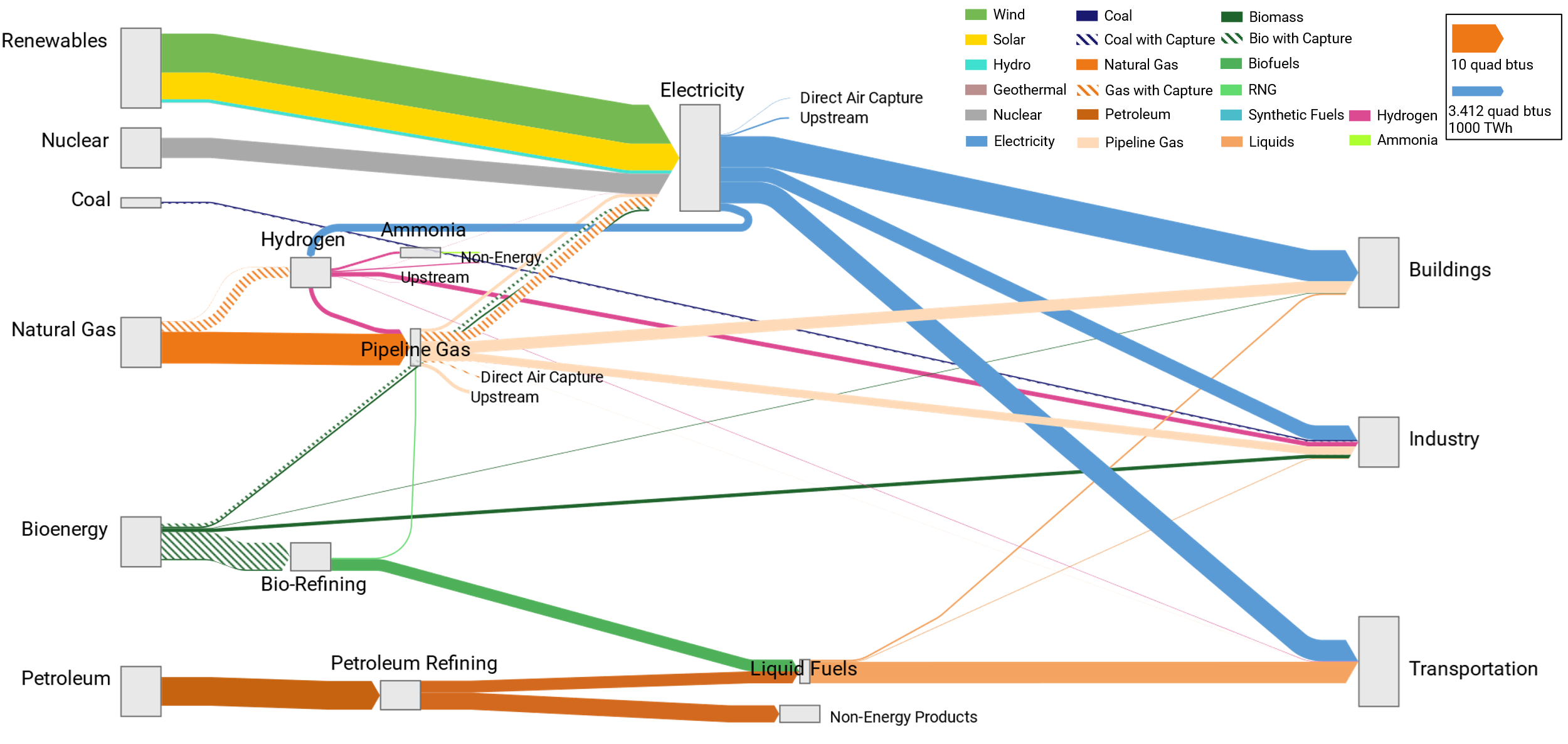Net-Zero Higher Fuel Cost Scenario

The results of the Net-Zero Higher Fuel Cost scenario suggest that even with more conservative assumptions about CCS, bioenergy, and natural gas, these technologies still play a significant, albeit smaller, role in a cost-effective net-zero strategy. Higher costs for gas with CCS for power generation increase the competitiveness of wind and solar in the generation mix. Higher oil prices and more limited biomass feedstock supply translate into higher prices and lower demand for liquid fuels, which leads to more electrification and more hydrogen demand. Lower demand for biofuels also implies a smaller scale for negative emissions from bioenergy with CCS, which both increases the carbon price and induces the deployment of direct air capture for carbon removal at the margin. Although direct air capture technology is also assumed to be available in the Net-Zero All Options scenario, it is a more expensive negative emissions option than bioenergy with CCS (based on the more optimistic biomass feedstock supply assumptions in that case) and thus is not deployed. Delivered prices are higher for all non-electric fuels due to the increased costs for gas, bioenergy, and CCS and the implicitly higher carbon price, leading to increased investments in energy efficiency and lower overall energy demand. Still, there are roughly 800 MtCO2 of negative emissions offsetting residual positive emissions from uncaptured petroleum and natural gas. Figure 13 shows the economy-wide energy flows in the Net-Zero Higher Fuel Cost scenario.